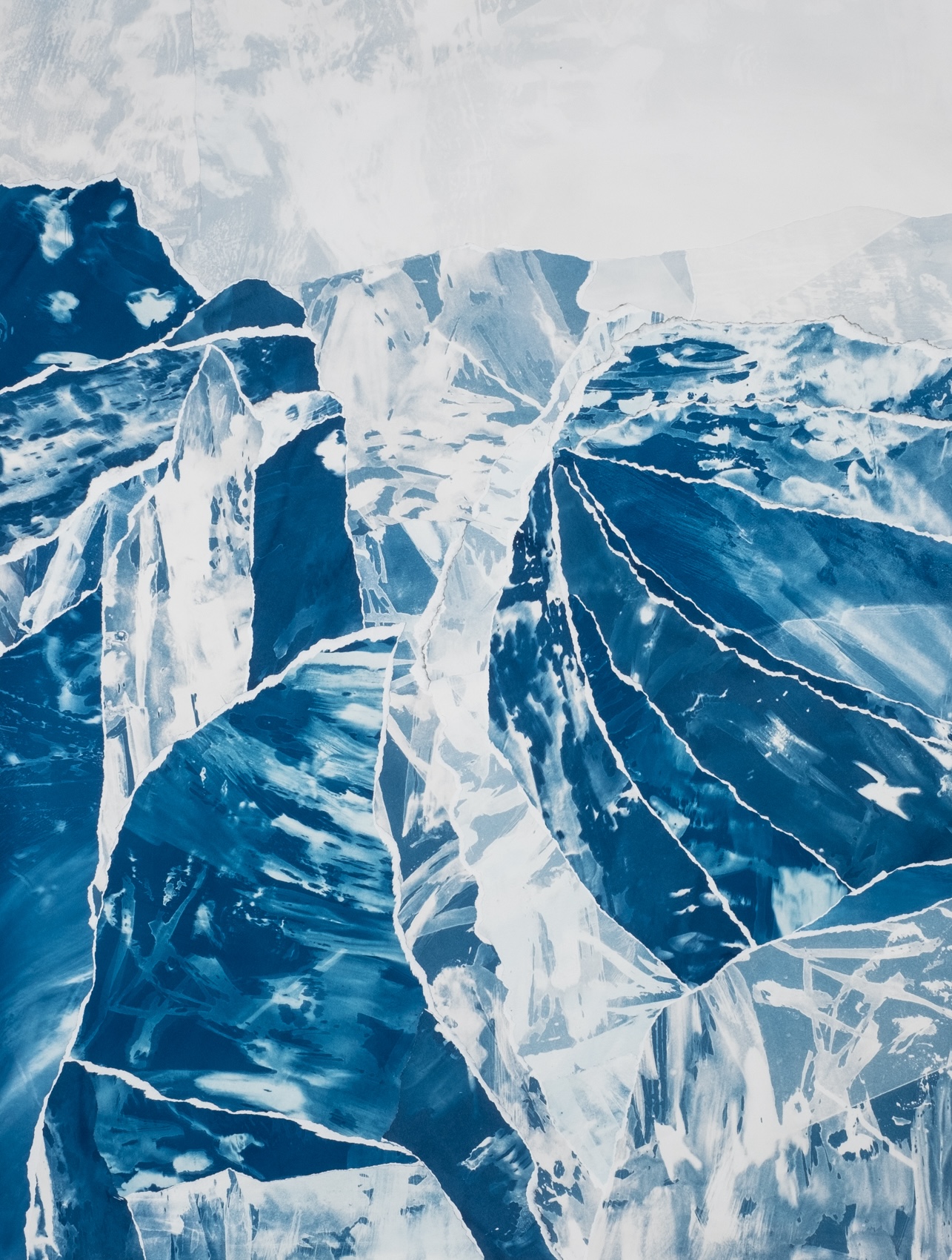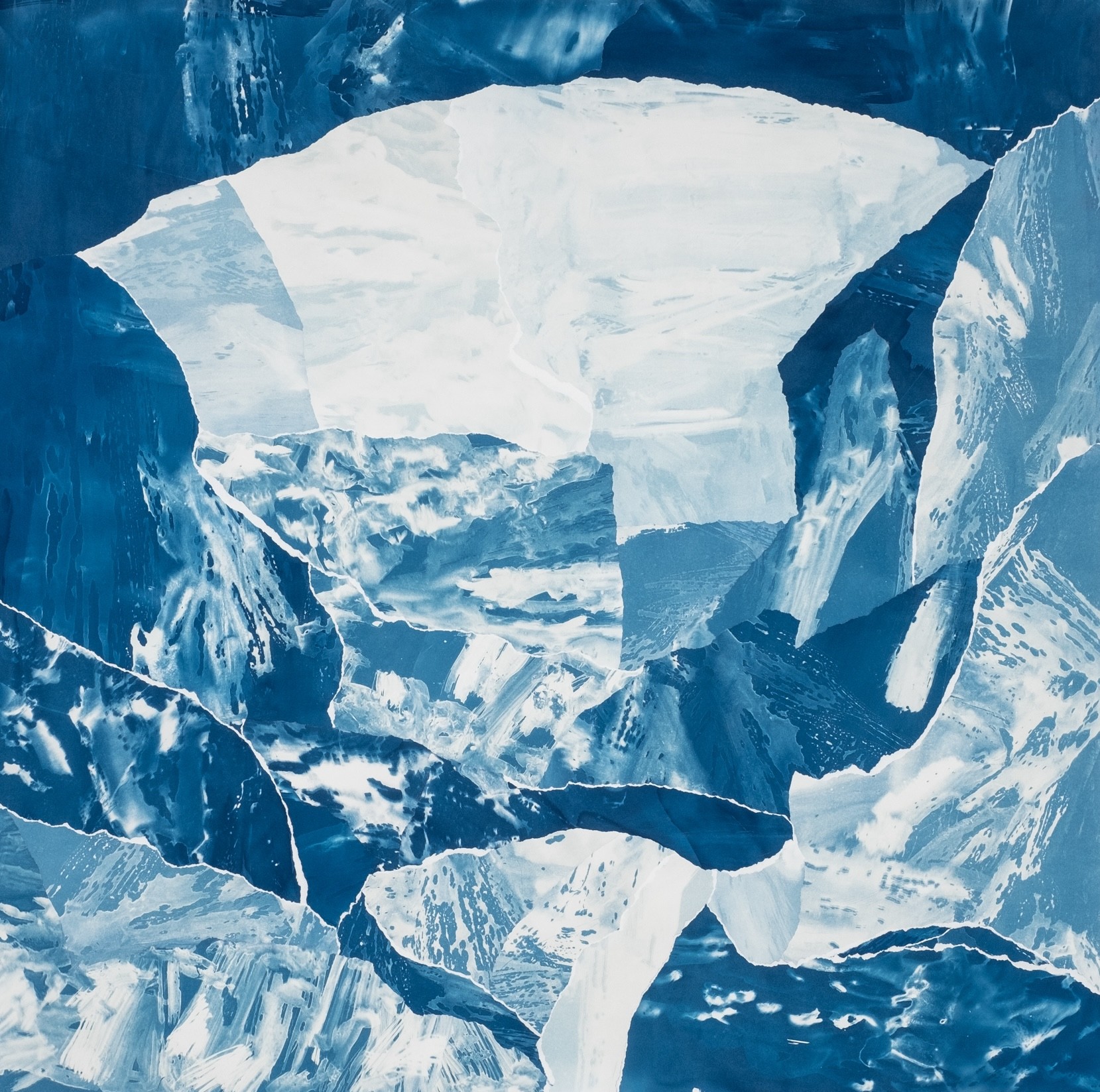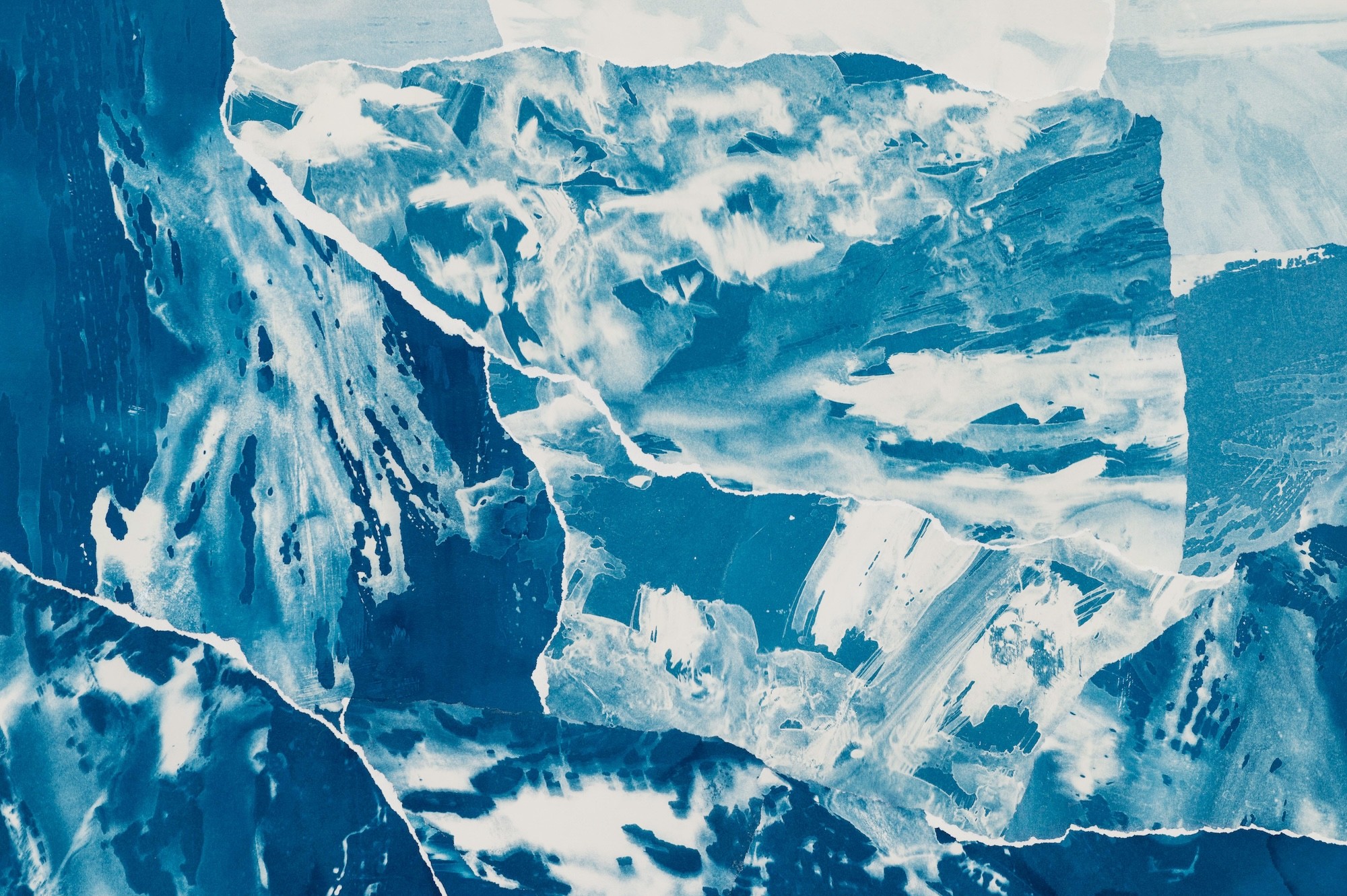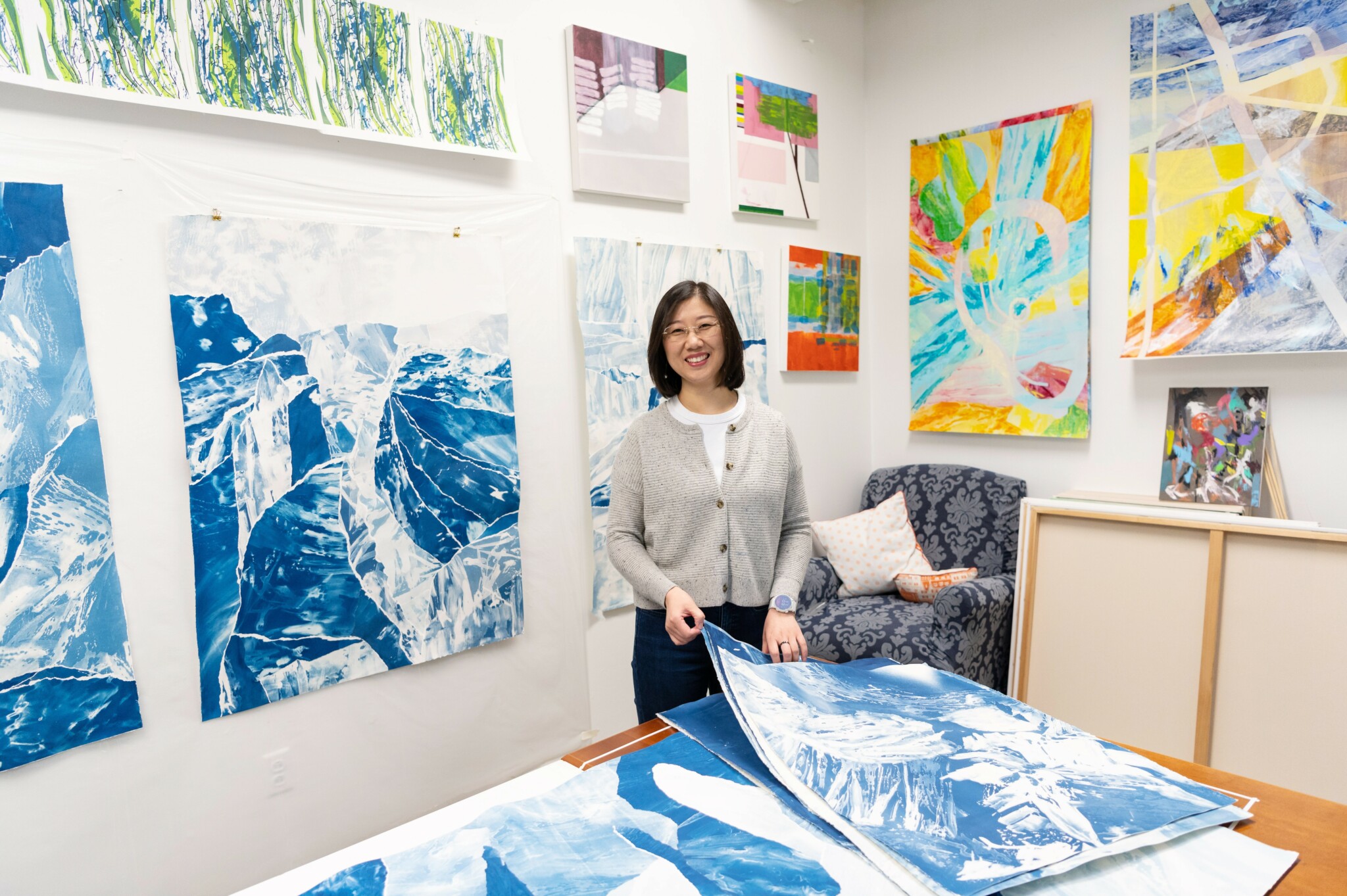We caught up with the brilliant and insightful Jiazi Yin a few weeks ago and have shared our conversation below.
Jiazi, thanks for taking the time to share your stories with us today Can you talk to us about a project that’s meant a lot to you?
The most meaningful project I’ve worked on is a body of work titled Lucid Dreams. I began this series as my MFA thesis at American University and have continued to expand it over time. Lucid Dreams uses landscape as a vehicle to investigate my shared experiences living abroad as an immigrant and the psychological experience encountering two distinct cultures.
I believe that landscapes play a vital role in shaping our perceptions and experiences of our environment. They evoke cultural and political connotations that can influence our thinking. One example of this is WuYue, which translates to “China’s five mountains”. These five mountains each have their own unique character and rich cultural associations. I have never visited these mountains, yet I still feel intimately connected to them, just as others may feel about Yellowstone or the Grand Canyon in the U.S. In Lucid Dreams, I have interwoven my personal experiences with the natural scenery of the United States and China. I attempt to understand and convey those meanings of landscape and find my own place between the two types of landscapes and cultures. I used mountains of China as photo negatives to create these cyanotype landscape prints. With these prints, I then create new topographies of the American landscape, based on a historical American Photographer John K. Hillers’ work. For adults living in a foreign country or for new immigrants, life becomes a process of fragmentation and reconstruction—whether in language, culture, or daily existence. I use landscape collage as a metaphor for this tearing apart and reassembling. While landscapes themselves remain unchanged—mountains are immovable, and rivers continue to flow—we must still adapt and struggle to survive. The violence of tearing and reconfiguring in my artistic process mirrors the challenges of this experience.
My work is an exploration of this intersection between two cultures and landscapes, and how we process these experiences as outsiders. I use cyanotype as my medium as it represents the ephemeral and variable nature of life and memory. Life is transient, and memory is fleeting, just like the colors of the cyanotype prints that change depending on the exposure time.
At the same time, I want to convey that no matter how much we change, we remain ourselves, carrying the memories and cultural identities of our past. It is a balance of transformation and continuity. Recently, I have been creating mirrored versions of this series, using the landscapes of Georgia as negatives to form traditional Chinese landscape paintings.Through this, I want to express this intertwined life experience of immigrants or people like me who live abroad.


As always, we appreciate you sharing your insights and we’ve got a few more questions for you, but before we get to all of that can you take a minute to introduce yourself and give our readers some of your back background and context?
Definitely. Hi, I am Jiazi Yin, an artist based in Duluth, Georgia. Before moving here, I spent ten years in the DMV area. I grew up in China and lived in Japan for four years before moving to the United States in 2014 to pursue my artistic aspirations. My work explores memory, time, space, interpersonal relationships, and shared experiences. The subject matter varies from human figures to abstractions.
I explore the relationships and emotions within family life—universal, enduring, yet deeply complex. Over the past two or three years, I have lost several family members in succession, prompting reflections on grief, life, death, and the present moment. Some of my recent figurative works serve as tributes to my late family members, while others explore the experience of mourning.
After the pandemic, I became increasingly interested in the shared experiences of immigrant life. I began by depicting the lives of my Asian immigrant friends, as we share common experiences. As an artist, I feel a responsibility to bring visibility to the Asian community. Over time, my focus expanded to exploring the broader, collective experiences of immigrants.
In addition , my work also focuses on retrospection, analyzing my perception of the passage of time, and the transformation of space. As an immigrant, maps signify relocation and memory. I include abstract maps in a lot of my work so I won’t get lost.
I choose different mediums to convey different ideas. I use color to express memory and emotion, while cyanotype—a photographic process—subtly captures the transience and fragility of memory. I also work with Yupo paper, whose translucent quality reflects the ambiguity of memory, adding depth and complexity to its layers.


What do you think is the goal or mission that drives your creative journey?
I think it all comes from a desire to share—to express my feelings and insights through my work. On another level, maybe it’s also about wanting to be seen, heard, and understood.
I draw a lot of energy from poetry, literature, and music. These works remind me that I’m not alone, that there are others in the world who feel as I do. My thoughts, struggles, despair, and hope are not just my own—they are universal. The world moves in cycles, repeating itself. Every moment—whether I’m washing my face, creating art, or having strange ideas—there have always been, and always will be, others like me in the past, present, and future. We are not alone. We just need to follow our own path.
I hope my work evokes empathy in viewers, much like literature does—allowing them to step into experiences they’ve never had while also seeing their own lives from a fresh, outsider’s perspective.


For you, what’s the most rewarding aspect of being a creative?
To me, the most precious thing is connection with others. Art has introduced me to people from all walks of life, expanding my perspective and enriching my experiences. Even if some are just passing through my life, I believe every encounter is meaningful and should be cherished.
Creating art brings me happiness and a deep sense of connection to the world. I know that art is something I truly need—it calms my heart, allows me to explore inward, keeps me grounded, and helps me face life without fear. I need it to extend my existence, to continuously uncover the truth and meaning of myself and life. I need it to strip away illusions and reveal the essence of things.
Our spirits need something to hold onto, something to resonate with—something beyond what other people, or even material things, can provide. Only the shared forces of humanity—science, nature, religion, art, and etc.—can truly sustain us.
Art is my bridge to the outside world, and through it, I hope to meet and connect with more people across different places and experiences.
Contact Info:
- Website: https://www.jiaziyin.com
- Instagram: Jiazi_art
- Facebook: https://www.facebook.com/jiazi.yin


Image Credits
Image 2345-Pete Duvall


